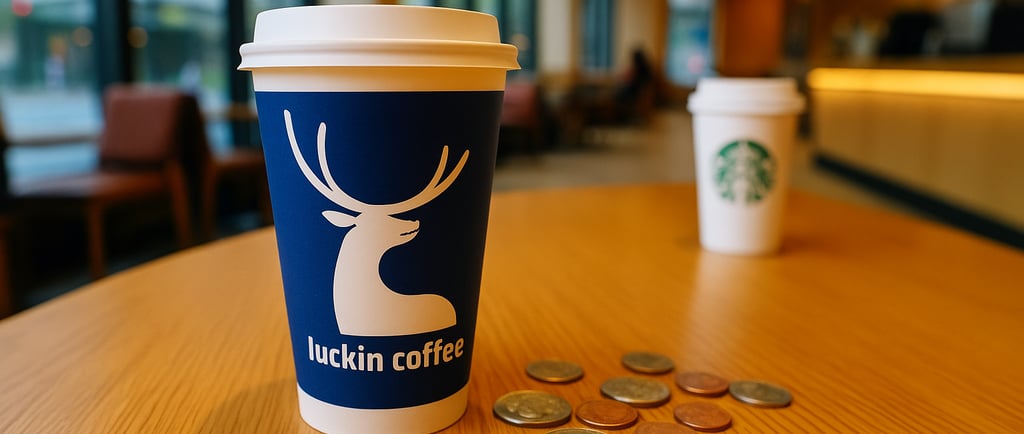💎 CLICK FOR FREE RESOURCES
Luckin's $1.40 Coffee Is Coming For Your Customers
(And You Can't Compete On Price)
11/14/20253 min read


On July 2, 2025, Luckin Coffee opened two stores in Manhattan. One near NYU. One in Midtown. Both in Starbucks' backyard.
By September, they had five locations across New York. By year-end, they'll have ten.
24,097 stores globally. $5.7 billion revenue. Stock up 3,000% since bankruptcy. Opening 17 new stores per day.
And they're selling coffee for $1.40.
While you're watching the C price and panicking about margins, a company that was delisted for fraud four years ago just figured out how to print money selling coffee cheaper than your cost of goods.
This isn't a China story anymore. This is coming to your city. And you're not ready.
The Most Remarkable Turnaround You've Never Heard About
Let me tell you what actually happened while you were ignoring Asia.
In 2020, Luckin Coffee fabricated $340 million in sales. Got caught. Got delisted from NASDAQ. Fired senior management. Declared bankruptcy.
Every analyst said they were done. The fraud scandal would kill consumer trust. The business model was unsustainable. The price war with rivals would bleed them dry.
They were spectacularly wrong.
Since restructuring:
• Revenue up 5x
• Store count from 4,900 to 24,097
• 47% year-over-year revenue growth in Q2 2025
• Net income up 44% year-over-year
• Customer acquisition cost down from 100 yuan to 20 yuan
• Same-store sales growth accelerating for four consecutive quarters
That's not a recovery. That's a masterclass in execution.
What They Figured Out That You Haven't
Three weeks ago, I met with Paolo, a roaster in Rome doing €3.8M revenue. Solid business. Good coffee. Loyal local customers.
"Matteo," he said, "we're specialty. We're not competing with chains. Our customers care about quality."
I pulled up Luckin's menu on my phone. Showed him their Coconut Latte. Their Cold Brew variations. Their single-origin options. The photo was indistinguishable from what he serves.
"That's not specialty," he protested.
"Your customers won't know the difference," I replied. "And it costs half as much."
Here's what Luckin understood that most specialty roasters refuse to accept: for 80% of consumers, coffee is a beverage, not a religion.
They don't care about your direct-trade relationships. They don't care about your custom roast profiles. They don't care about your barista's latte art.
They care about:
1. Price
2. Convenience
3. Consistency
4. Novelty (but not complexity)
That's it. That's the list.
And Luckin engineered every single operational element to dominate those four factors.
The Business Model You Can't Replicate
Let's break down how they actually work, because this matters.
Vertical Integration at Scale:
Luckin owns their supply chain. Not "has good relationships with suppliers." Actually owns it. They were one of the earliest coffee chains in China to achieve vertical integration of the upstream coffee industry.
They opened a 570,000 sq ft roasting facility in 2024. Then broke ground on another facility months later. They're investing billions in coffee roasting capacity and infrastructure.
At 24,000+ stores, they're buying green coffee at volumes most countries can't match. Their per-unit cost is 40-60% below what you pay.
Digital-First Operations:
Their technology covers every aspect of their business, from customer engagement and storefront operations to supply chain management. It's not an add-on. It's the foundation.
Every transaction is app-based. Zero cashiers. Zero transaction friction. Every customer interaction generates data. That data feeds AI systems that optimize:
• Store location placement
• Inventory allocation
• Product development
• Pricing strategy
• Promotion targeting
They launch a new product every 2-3 weeks. Not because they're creative. Because their data tells them exactly what will sell before they launch it.
Pick-Up Store Model:
American coffee culture emphasizes the "third place" experience. Luckin emphasizes efficiency, cost-effectiveness, and quick pickup.
No seating. No ambiance investment. No "experience" overhead. 200-400 square feet. One or two staff. Optimized for mobile order pickup and delivery.
Real estate costs: 70% lower than traditional cafés.
Labor costs: 60% lower than sit-down locations.
Throughput per square foot: 3-4x higher.
Promotion Strategy That Actually Works:
This is where most people misunderstand them.
You see "$1.40 coffee" and think "loss leader" or "unsustainable pricing."
Wrong.
Luckin attracts consumers with immediate discounts and generous promotions, including $0.99 coffee for new users, $1.99 drinks for referrals, and breakfast combo deals. But these aren't blanket discounts.
They're algorithmically targeted. First-time user in high-traffic area at 8 AM on a weekday? $0.99. Regular customer ordering their third drink this week? Full price. Lapsed customer who hasn't ordered in 30 days? 30% off.
The aggregate economics work because their cost structure allows profitability at prices that would bankrupt you.
© Matteo Borea - All rights reserved - Z0145324S
